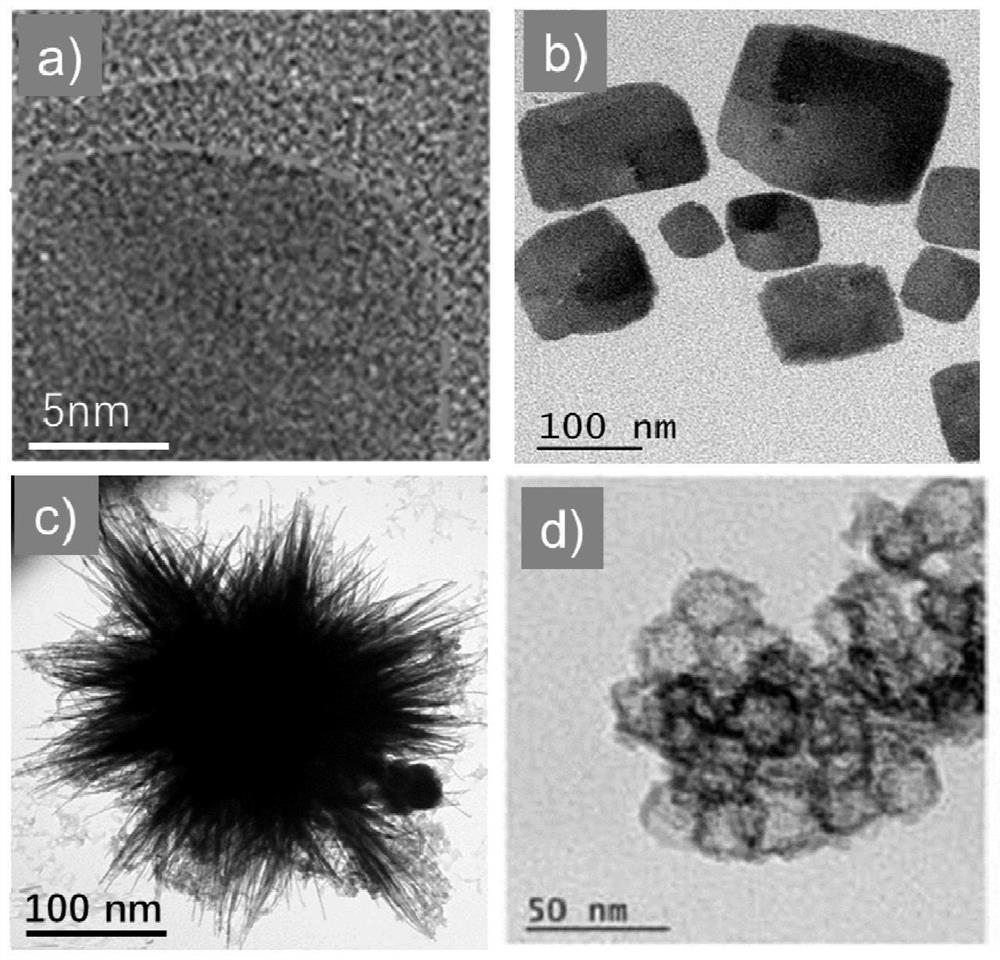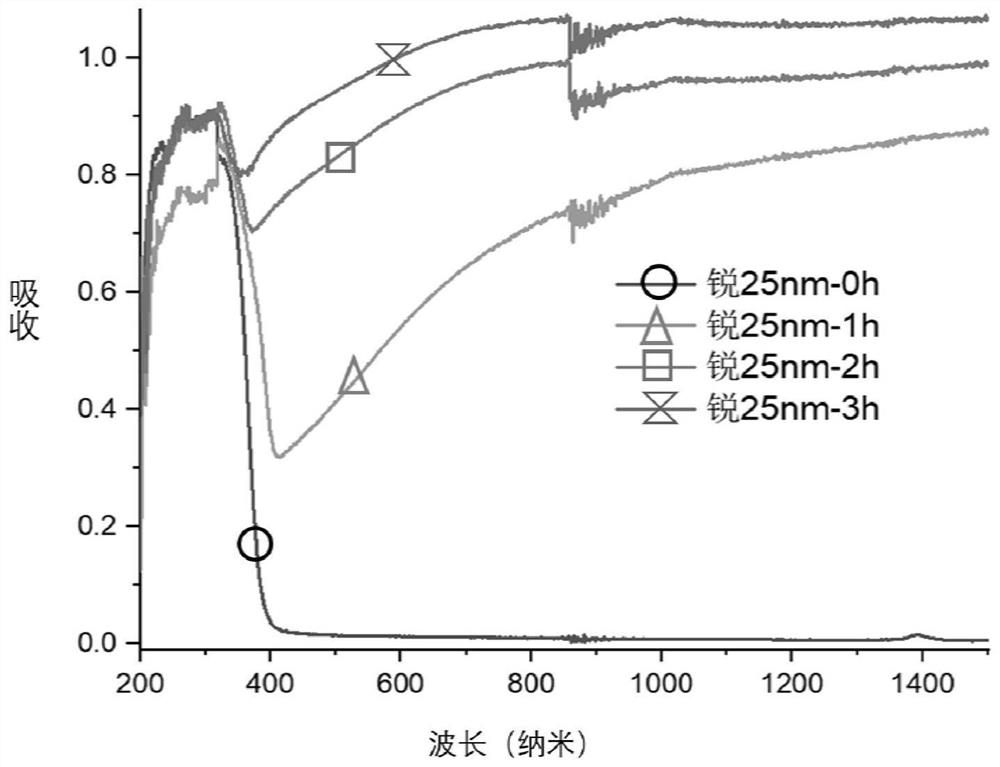Application of reduced metal oxide semiconductor nanomaterial in antibacterial material
A technology of oxide semiconductors and nanomaterials, applied in the field of antibacterial nanomaterials, can solve the problems of single antibacterial mechanism, antibacterial activity to be improved, and limit the application range of antibacterial performance, so as to improve utilization, inhibit nucleic acid transcription and replication, and inhibit cell wall synthesis Effect
- Summary
- Abstract
- Description
- Claims
- Application Information
AI Technical Summary
Problems solved by technology
Method used
Image
Examples
Embodiment 1
[0049] The black TiO of embodiment 1 different degree of reduction 2 Preparation of spherical nanoparticles
[0050] Take anatase white TiO with a particle size of 25 nm 2 3 parts of spherical nanoparticle powder, 10 grams each, and 3 parts of sodium borohydride powder, 5 grams each, were mixed and ground uniformly at room temperature respectively. Put the mixed powder into a tube furnace, raise the temperature to 350°C at a rate of 10°C / min under the protection of argon, and heat and react for 1, 2, and 3 hours respectively. After the reaction, the obtained powders were respectively dispersed into ultrapure water, centrifuged at 12,000 rpm for 20 minutes, repeated 5 times, then dispersed in absolute ethanol, and centrifuged at 12,000 rpm for 20 minutes to remove residual The reactant, the centrifuged precipitate was placed in an oven at 80°C, and after drying, black TiO with different degrees of reduction was obtained. 2 Spherical nanoparticles, respectively marked as 1#, ...
Embodiment 2
[0051] Embodiment 2 black ZrO 2 Preparation of spherical nanoparticles
[0052] Take 5.0 g of ZrO 2 Spherical nanoparticle powder and 1 gram of sodium borohydride powder were mixed and ground uniformly at room temperature. Put the mixed powder into a tube furnace, raise the temperature to 350° C. at a rate of 10° C. / min under the protection of argon, and heat and react for 4 hours respectively. After the reaction, the powder was dispersed into ultrapure water, centrifuged at 12,000 rpm for 20 minutes, repeated 3 times, then dispersed in absolute ethanol, and centrifuged at 12,000 rpm for 20 minutes to remove residual reactants. The centrifuged precipitate was placed in an oven at 80°C, and black ZrO was obtained after drying. 2 spherical nanoparticles.
Embodiment 3
[0053] Embodiment 3 black TiO 2 Preparation of hollow nanospheres
[0054] Take 5 ml of tetraethyl orthosilicate and add it to 100 ml of the mixed solution of ethanol, ammonium hydroxide and water (volume ratio of ethanol: ammonium hydroxide: water = 95:4:1), and stir at 25°C 8 hours, get SiO 2 kernel. 5 ml of isopropyl titanate was added to the reaction solution, and stirring was continued for 8 hours. After the reaction, centrifuge at 12,000 rpm for 30 minutes, repeat washing and centrifugation 3 times to obtain SiO 2 -TiO 2 Core-shell nanospheres. In order to remove SiO 2 core, the SiO 2 -TiO 2 The core-shell nanospheres were dispersed in 1 mol / L sodium hydroxide solution and stirred for 6 hours. After the reaction, centrifuged at 12,000 rpm for 30 minutes, repeated washing and centrifuging for 3 times, and dried at 80°C for 6 hours to obtain white TiO 2 Hollow nanosphere powder. Take 1 gram of white TiO 2 Hollow nanospheres and 0.3 g of sodium borohydride were m...
PUM
| Property | Measurement | Unit |
|---|---|---|
| thickness | aaaaa | aaaaa |
| particle diameter | aaaaa | aaaaa |
| particle diameter | aaaaa | aaaaa |
Abstract
Description
Claims
Application Information
 Login to View More
Login to View More - R&D
- Intellectual Property
- Life Sciences
- Materials
- Tech Scout
- Unparalleled Data Quality
- Higher Quality Content
- 60% Fewer Hallucinations
Browse by: Latest US Patents, China's latest patents, Technical Efficacy Thesaurus, Application Domain, Technology Topic, Popular Technical Reports.
© 2025 PatSnap. All rights reserved.Legal|Privacy policy|Modern Slavery Act Transparency Statement|Sitemap|About US| Contact US: help@patsnap.com



